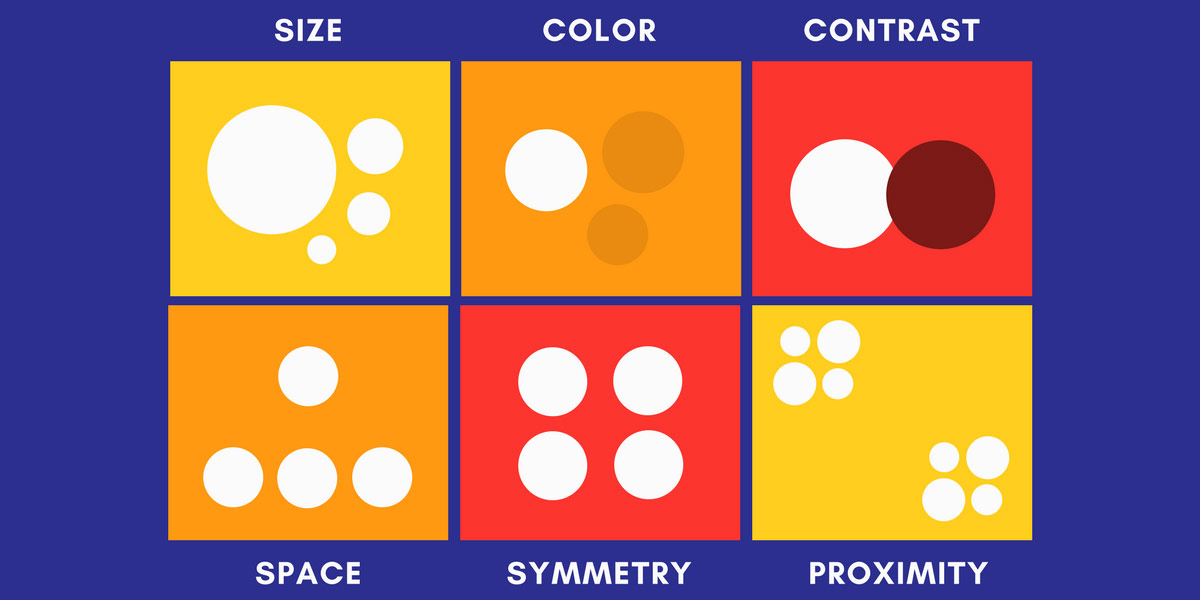
Top 12 User Interface Design Principles
The user interface design has become more important than ever before. Whether you’re designing a website, mobile application, or desktop software, the user interface (UI) is often the first point of contact between the user and the product. As such, it is crucial to ensure that the UI is intuitive, accessible, and easy to use.
User interface design principles are a set of guidelines that designers follow when creating digital interfaces. These principles help ensure that the interface is user-friendly and provides a positive user experience. By following these principles, designers can create interfaces that meet the needs of their users and make it easy for them to accomplish their goals.
In this article, we will explore the top 12 user interface design principles and how they can help designers create effective digital interfaces. We will provide examples of each principle in action and discuss how designers can apply these principles to their designs. Additionally, we will cover the importance of understanding users and conducting user research in UI design.
It is important to note that user interface design is not just about making the interface look pretty. While aesthetics are certainly important, the primary goal of UI design is to create interfaces that are functional, efficient, and easy to use. By following user interface design principles, designers can ensure that their interfaces are effective in achieving these goals.
Whether you are a seasoned UI designer or just starting, understanding user interface design principles is essential to creating interfaces that are intuitive, accessible, and user-friendly. So, let’s dive in and explore the top 12 user interface design principles and how they can be applied to your designs.

Top 12 User Interface Design Principles
Interface Design Principles
#1 Consistency
Consistency is one of the most important UI design principles in 2023. Consistency refers to the use of consistent design elements throughout the interface, such as colour, typography, and layout. By using consistent design elements, users can quickly and easily understand how to navigate the interface and complete tasks.
Inconsistent design can cause confusion and frustration, leading to a poor user experience. Therefore, designers must strive for consistency in all aspects of the interface, from the design elements used to the language and tone used throughout the interface.
#2 Clarity
Clarity is another important UI design principle for 2023. Clarity refers to the use of clear and straightforward language, labelling, and visual hierarchy. Designers must ensure that users can understand the purpose and function of each element within the interface.
To achieve clarity, designers must focus on using simple and concise language, avoiding jargon and technical terms whenever possible. They should also ensure that all elements are labelled clearly and accurately, with the most important elements given prominence in the visual hierarchy.
#3 Simplicity
Simplicity is key to creating user-friendly interfaces in 2023. Designers must aim to reduce complexity and streamline the user experience wherever possible. This means avoiding unnecessary elements and features that can distract from the core purpose of the interface.
Simplicity also means using clear and concise language, avoiding cluttered design, and reducing the number of steps required to complete a task. The simpler the interface, the more intuitive and easy to use it will be.
#4 Feedback
Feedback is an essential UI design principle in 2023. Providing feedback to users is critical to ensure they understand the actions they are taking and the results of those actions. Feedback can be provided through visual cues, sounds, or text-based messages, depending on the context of the interface.
Feedback also helps to build user trust in the interface, providing users with a sense of control over their actions and increasing their confidence in using the interface.
#5 Flexibility
Flexibility is an important UI design principle for 2023. Designers must provide users with multiple paths to complete a task, allowing for different approaches and user preferences. Flexibility can be achieved through the use of custom settings, personalization features, and adaptive interfaces that respond to user behaviour.
By providing users with flexibility, designers can create interfaces that are tailored to the user’s needs and preferences, leading to a more personalized and satisfying user experience.
#6 Accessibility
Accessibility is a critical UI design principle in 2023. Designers must ensure that their interfaces are accessible to users with disabilities, such as visual or hearing impairments. This requires the use of appropriate design elements, such as colour contrast and text size, as well as the use of alternative text for images and audio descriptions for videos.
By designing for accessibility, designers can create interfaces that are inclusive and accessible to all users, regardless of their abilities.
#7 Speed
Speed is a crucial UI design principle in 2023. Users expect interfaces to load quickly and respond immediately to their actions. Slow or unresponsive interfaces can cause frustration and lead to a poor user experience.
Designers must strive to create interfaces that load quickly and respond immediately to user input. This can be achieved through the use of optimized code, efficient design elements, and streamlined user flows.
#8 Minimalism
Minimalism is an effective UI design principle for 2023. Minimalist design elements, such as clean lines, simple typography, and white space, can reduce distractions and focus attention on the most important elements within the interface.
By using a minimalist design, designers can create interfaces that are elegant, sophisticated, and easy to use. Minimalism also helps to reduce clutter and simplify the user experience
#9 Familiarity
Familiarity is an important UI design principle for 2023. Designers must ensure that their interfaces are familiar and consistent with other interfaces in the same industry or niche. This can be achieved through the use of established design patterns, such as navigation menus, search bars, and icons.
By using familiar design patterns, designers can create interfaces that are easy to use and understand for users, even if they have never used the interface before. This can also help to build user trust in the interface, as users will feel more confident and comfortable with familiar design elements.
#10 Visual Hierarchy
Visual hierarchy is a crucial UI design principle in 2023. Visual hierarchy refers to the use of design elements, such as colour, size, and contrast, to guide the user’s attention and focus on the most important elements within the interface.
By using visual hierarchy, designers can direct the user’s attention to the most important elements, such as calls to action or important information. This can help to improve the user experience and increase the likelihood of the user completing their desired task.
#11 Learnability
Learnability is an important UI design principle for 2023. Designers must ensure that their interfaces are easy to learn and understand, even for users who have never used the interface before. This can be achieved through the use of clear and concise language, intuitive design elements, and onboarding tutorials or guides.
By making the interface easy to learn and understand, designers can reduce the learning curve for users and increase their likelihood of returning to the interface in the future. This can also help to improve user satisfaction and brand loyalty.
#12 Context
Context is an important UI design principle for 2023. Designers must ensure that the interface is designed to meet the specific needs and expectations of the user, based on their context and situation. This can be achieved through the use of personalization features, such as geolocation and user preferences.
By designing for context, designers can create interfaces that are tailored to the user’s specific needs and preferences, leading to a more personalized and satisfying user experience.

Top 12 User Interface Design Principles – Interface Design Principles
Understanding Users
To design effective user interfaces, designers must have a deep understanding of the users who will be interacting with the interface. This involves conducting user research, gathering feedback, and analyzing user behaviour.
User Research
User research is the process of gathering information about the target audience and their needs, preferences, and behaviour. This can involve conducting surveys, interviews, and focus groups to gain insight into the user’s mindset and motivations.
By conducting user research, designers can gain a better understanding of the user’s needs and preferences, leading to a more effective and user-friendly interface.
Feedback
Feedback is an important part of the user experience. Designers must provide users with clear and timely feedback to ensure that they understand what is happening within the interface and can adjust their behaviour accordingly.
This can be achieved through the use of visual cues, such as progress bars or loading animations, as well as through clear and concise messaging.
By providing effective feedback, designers can create interfaces that are more intuitive and user-friendly, leading to a more satisfying user experience.
User Behavior
Analyzing user behaviour is an important part of understanding users. By tracking user behaviour within the interface, designers can gain insight into the user’s preferences and behaviour patterns.
This can help designers to identify areas of the interface that are causing frustration or confusion, and make adjustments to improve the user experience.
Accessibility
Designers must also consider accessibility when designing user interfaces. Accessibility involves creating interfaces that can be used by people with disabilities or impairments, such as visual or hearing impairments.
This can be achieved through the use of assistive technologies, such as screen readers or closed captioning, as well as through the use of clear and concise messaging and intuitive design elements.
By designing for accessibility, designers can create interfaces that are more inclusive and user-friendly for a wider range of users.
User Testing
User testing is the process of testing the interface with real users to gain insight into the user experience. This can involve conducting usability tests or A/B testing to compare the effectiveness of different design elements.
By conducting user testing, designers can gain valuable feedback from real users and make adjustments to the interface to improve the user experience.

Top 12 User Interface Design Principles – Understanding Users
Examples of Effective UI Design Principles
There are many effective UI design principles that designers can use to create intuitive and user-friendly interfaces. Here are some examples:
Keep it Simple
One of the most important UI design principles is to keep the interface simple and easy to understand. This involves minimizing clutter and unnecessary elements and focusing on the core functionality of the interface.
For example, the Google search engine has a simple and clean interface, with a single search bar and minimal distractions. This allows users to focus on the task at hand and quickly find the information they need.
Use Consistent Design Patterns
Consistent design patterns are important for creating a predictable and familiar user experience. This involves using consistent visual language, navigation, and interaction patterns throughout the interface.
For example, the Apple iOS operating system uses consistent design patterns across all of its apps, making it easy for users to navigate and interact with different apps.
Provide Clear Feedback
Clear feedback is essential for providing users with a sense of control and understanding. This involves providing visual cues and feedback for user actions, such as button presses or form submissions.
For example, when a user submits a form on a website, a clear message should be displayed indicating that the form has been submitted successfully or if any errors need to be corrected.
Use Intuitive Navigation
Intuitive navigation is key to creating an easy-to-use interface. This involves organizing information and functionality in a logical and easy-to-understand way, with clear and consistent navigation throughout the interface.
For example, the Dropbox file hosting service uses a simple and intuitive navigation system, with clear labels and easy-to-use icons for accessing different features and settings.
Design for Accessibility
Designing for accessibility is important for creating interfaces that can be used by people with disabilities or impairments. This involves using clear and concise messaging, intuitive design elements, and assistive technologies to ensure that the interface can be used by everyone.
For example, the Twitter social media platform uses closed captioning for videos and images, making the platform more accessible to people with hearing impairments.
Test and Iterate
Testing and iteration are important for ensuring that the interface is effective and user-friendly. This involves conducting user testing and gathering feedback, and making adjustments to the interface based on the results.
For example, the Airbnb vacation rental platform regularly conducts user testing and gathers feedback to improve the user experience and make the interface more intuitive and user-friendly.

Top 12 User Interface Design Principles – Examples of Effective UI Design Principles
Conclusion
In today’s digital world, user interface design principles are crucial for creating effective and user-friendly interfaces that people can easily use and enjoy. By understanding the principles of UI design and applying them to your designs, you can create interfaces that are intuitive, accessible, and easy to use.
Designers can keep their interface design simple and use consistent design patterns to create a predictable and familiar user experience. They can provide clear feedback to users and use intuitive navigation to make the interface easy to understand and navigate. They can also design for accessibility to ensure that the interface can be used by everyone.
Testing and iteration are also important for ensuring that the interface is effective and user-friendly. By gathering feedback and making adjustments to the interface based on the results, designers can create interfaces that meet the needs of their users and provide a positive user experience.
In conclusion, UI design principles are essential for creating interfaces that are easy to use, accessible, and effective. By applying these principles to your designs, you can create interfaces that meet the needs of your users and provide a positive user experience.

FAQ
What are user interface design principles?
User interface design principles are a set of guidelines that designers follow when creating user interfaces for digital products or applications. These principles help ensure that the interface is intuitive, accessible, and easy to use.
Why are user interface design principles important?
User interface design principles are important because they help designers create interfaces that meet the needs of their users and provide a positive user experience. By following these principles, designers can ensure that the interface is intuitive, accessible, and easy to use.
What are some examples of user interface design principles?
Some examples of user interface design principles include simplicity, consistency, feedback, navigation, and accessibility. These principles help ensure that the interface is easy to understand and use.
How do designers apply user interface design principles to their designs?
Designers apply user interface design principles to their designs by following guidelines and best practices, using design patterns, conducting user research and testing, and iterating on the design based on feedback.
What is the role of user research in UI design?
User research is an important part of UI design because it helps designers understand the needs, preferences, and behaviours of their users. By conducting user research, designers can create interfaces that meet the needs of their users and provide a positive user experience.
How do designers ensure that their interfaces are accessible?
Designers ensure that their interfaces are accessible by following accessibility guidelines and best practices, designing for keyboard navigation and screen readers, providing alternative text for images, and testing the interface with users who have disabilities.
Can user interface design principles be applied to all types of digital products?
Yes, user interface design principles can be applied to all types of digital products, including websites, mobile applications, desktop software, and other digital interfaces.
What are some common mistakes to avoid in UI design?
Some common mistakes to avoid in UI design include cluttered interfaces, inconsistent design patterns, confusing navigation, and lack of feedback. These mistakes can make the interface difficult to use and reduce the overall user experience.

With over two decades of web design and development expertise, I craft bespoke WordPress solutions at FallingBrick, delivering visually striking, high-performing websites optimised for user experience and SEO.




